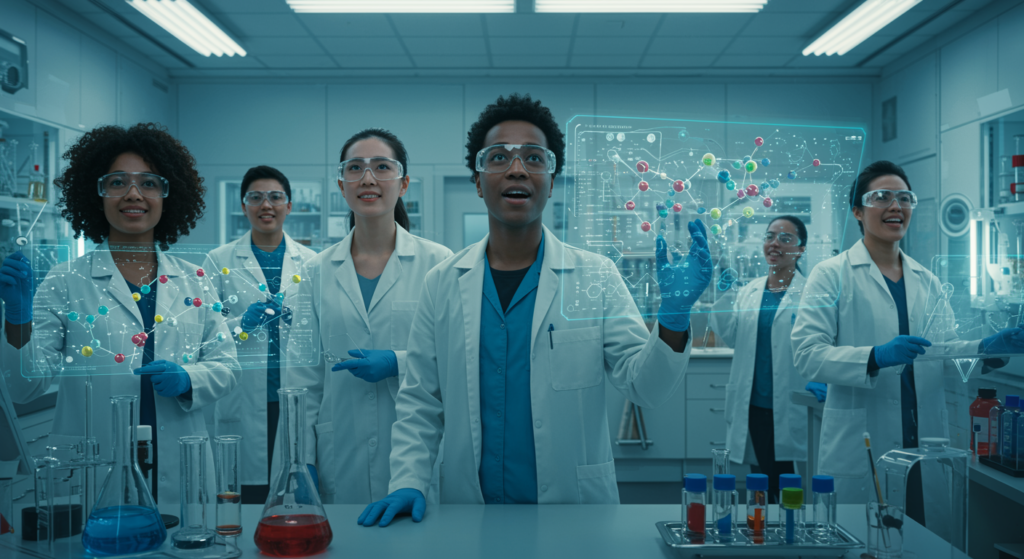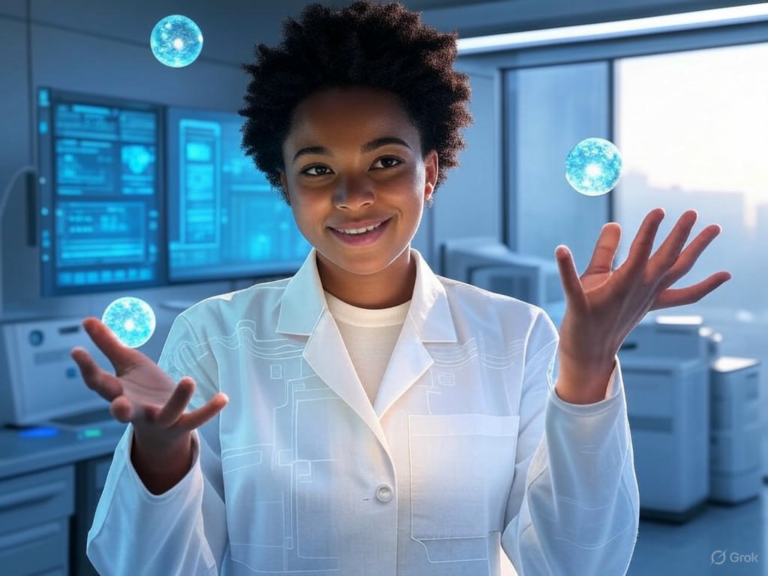
AI’s Killer Application: Scientific Discovery per Microsoft Expert
Revolutionizing Scientific Discovery: Why AI is the Ultimate Catalyst
Artificial intelligence is reshaping how we approach scientific discovery, making complex breakthroughs more accessible and faster than ever before. According to Christopher Bishop, director of Microsoft Research AI for Science, this technology’s most transformative role lies in accelerating scientific discovery across fields like chemistry, biology, and energy. Have you ever wondered how AI could turn years of research into months? It’s not just a tool; it’s the driving force behind solving urgent global challenges, from developing new drugs to tackling climate change.
At Microsoft, leaders see AI as the core engine for scientific discovery, enabling researchers to simulate and predict outcomes that were once out of reach. This shift is evident in projects that combine AI with high-performance computing, yielding results that address humanity’s biggest problems. By integrating vast datasets, AI helps uncover patterns humans might miss, making scientific discovery a collaborative effort between machines and minds.
The Rise of Foundation Models in Driving Scientific Discovery
Foundation models are at the heart of modern scientific discovery, offering a versatile approach that goes beyond traditional AI limitations. These models, trained on diverse and massive datasets, can analyze patterns in ways that speed up everything from molecular simulations to climate modeling. Imagine sifting through millions of data points in hours—what used to take teams years can now happen almost instantly, thanks to this innovation.
Microsoft’s collaborations, such as with the Pacific Northwest National Laboratory, showcase how foundation models enhance scientific discovery by predicting material properties for better batteries. This means researchers can simulate complex structures, forecast energy behaviors, and even model environmental systems with unprecedented accuracy. For instance, in drug development, these models help identify promising compounds faster, potentially saving lives by shortening the path to new treatments.
One relatable example: Think about how AI-powered tools could predict weather patterns more precisely, aiding farmers in planning crops. By leveraging foundation models, scientific discovery becomes not just faster but more predictive, opening doors to innovations we haven’t even imagined yet.
Accelerating Breakthroughs in Scientific Discovery: From Months to Days
The real magic of AI in scientific discovery is seen in tangible results that cut down timelines dramatically. In materials science, Microsoft and PNNL used AI to screen over 32 million compounds, pinpointing 18 strong candidates for advanced batteries in just 80 hours. This leap in efficiency highlights how scientific discovery is evolving, turning what was once a slow process into rapid innovation.
In drug discovery, tools like Microsoft’s TamGen generator are streamlining the search for new pharmaceuticals, reducing the journey from lab to clinical trials. Meanwhile, in medical imaging, generative AI models analyze scans quicker, leading to faster diagnoses and personalized care. What if AI could help detect diseases earlier, giving patients more time? It’s already happening, proving that scientific discovery powered by AI isn’t futuristic—it’s here.
These advancements aren’t isolated; they’re part of a broader wave where AI enhances scientific discovery by integrating data from various sources. For researchers, this means more time for creative thinking and less on repetitive tasks, fostering a cycle of continuous improvement.
How Microsoft’s AI for Science Initiative is Leading Scientific Discovery
Microsoft’s AI for Science program is a powerhouse for advancing scientific discovery, bringing together experts in machine learning, quantum physics, and biology. This initiative focuses on tailored AI architectures that blend simulations with real-world data, creating deeper insights for fields like computational chemistry. Through global partnerships with universities and industry leaders, they’re making scientific discovery more collaborative and impactful.
Key technologies from Microsoft, such as Azure Quantum Elements, are accelerating workflows in materials science and beyond. These tools allow scientists to automate complex processes, like designing new molecules, which could lead to breakthroughs in sustainable energy. Ever considered how AI might personalize medicine based on your genetics? Microsoft’s efforts are paving the way for that reality.
Essential Tools Powering Scientific Discovery
- Azure Quantum Elements: Speeds up simulations in chemistry and materials, making scientific discovery more efficient.
- Generative AI Models: Tailored for biological and physical sciences, they predict outcomes and inspire new experiments.
- AI-Assisted Emulators: Simplify analysis of complex systems, enhancing everyday research processes.
By providing these resources, Microsoft is democratizing scientific discovery, helping smaller teams achieve big results. This approach not only boosts innovation but also ensures that scientific discovery benefits everyone.
The Global Impact: Tackling Challenges Through Scientific Discovery
AI’s role in scientific discovery is crucial for addressing global issues, from climate change to healthcare. Christopher Bishop notes that AI can “learn the language of nature,” interpreting data on molecules and ecosystems to drive solutions. A simple question: How can we use this to build a more sustainable world?
| Global Challenge | AI’s Role in Scientific Discovery |
|---|---|
| Drug Discovery | Accelerates compound screening and simulates effects for quicker medical advancements |
| Energy Storage | Identifies innovative materials to improve batteries and support clean energy transitions |
| Climate Change | Models trends and predicts events, aiding in proactive environmental strategies |
| Healthcare Diagnostics | Analyzes images rapidly for accurate, personalized treatment plans |
These applications show how scientific discovery, amplified by AI, can create real-world change. For example, in a hypothetical scenario, AI could help predict and mitigate natural disasters, saving communities and resources.
Christopher Bishop’s Vision for Advancing Scientific Discovery
Christopher Bishop envisions AI as a key enabler of scientific discovery, allowing seamless integration of data across disciplines. He points to 2012 as a turning point with the rise of deep learning, leading to models like GPT-4 that enhance research capabilities. In his words, AI’s ability to reason through complex datasets is revolutionizing how we approach scientific discovery.
“Science may be the most important application of AI. At Microsoft, we believe that the ability of generative AI to learn the language of humans is equally matched by its ability to learn the language of nature — including molecules, crystals, genomes and proteins.”
– Christopher Bishop, Director of Microsoft Research AI for Science
This perspective encourages researchers to think bigger, using AI to bridge gaps in knowledge. It’s an inspiring call to action for anyone passionate about innovation.
What’s Next: The Era of AI-Enhanced Scientific Discovery
Looking ahead, AI is poised to deepen its impact on scientific discovery, evolving to handle experimental design and real-time predictions. New models will not only analyze data but also suggest innovative approaches, surpassing human intuition in some cases. This could mean faster, more reproducible results in areas like pandemic response or material innovation.
For instance, AI might help design experiments that lead to new medicines or energy solutions, making scientific discovery a proactive process. As these technologies advance, they’ll continue to address urgent challenges, offering tools that are both powerful and user-friendly.
Conclusion: AI at the Heart of Scientific Discovery
The partnership between AI and scientific discovery is reshaping our future, with Microsoft leading the charge through expert initiatives and cutting-edge tools. As we’ve explored, this fusion promises faster breakthroughs that could transform medicine, energy, and more—what do you think about AI’s potential in your field? We invite you to share your thoughts in the comments, explore related articles on our site, or dive deeper into Microsoft’s resources for a closer look.
Ready to see AI in action? Check out this in-depth feature from Microsoft on foundation models accelerating research.
References
- [1] Microsoft Research AI for Science. Available at: https://www.microsoft.com/en-us/research/lab/microsoft-research-ai-for-science/
- [4] From Forecasting Storms to Designing Molecules: How New AI Foundation Models Can Speed Up Scientific Discovery. Available at: https://news.microsoft.com/source/features/ai/from-forecasting-storms-to-designing-molecules-how-new-ai-foundation-models-can-speed-up-scientific-discovery/
- [5] 2 AI Breakthroughs Unlock New Potential for Health and Science. Available at: https://news.microsoft.com/source/features/ai/2-ai-breakthroughs-unlock-new-potential-for-health-and-science/
- [6] How AI and HPC Are Speeding Up Scientific Discovery. Available at: https://news.microsoft.com/source/features/innovation/how-ai-and-hpc-are-speeding-up-scientific-discovery/
- [8] Microsoft’s Christopher Bishop: Scientific Discovery is AI’s Killer Application. Available at: https://neuron.expert/news/microsofts-christopher-bishop-scientific-discovery-is-ais-killer-application/12196/en/
scientific discovery, AI for Science, Microsoft Research, foundation models, AI breakthroughs, accelerating scientific discovery, AI-driven research, scientific innovation, Microsoft AI initiatives, quantum computing in science





